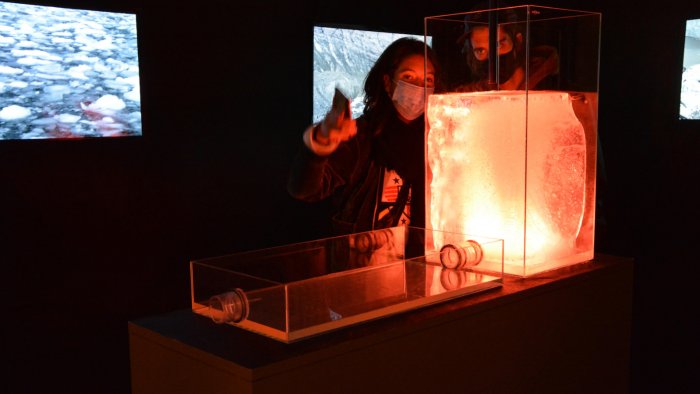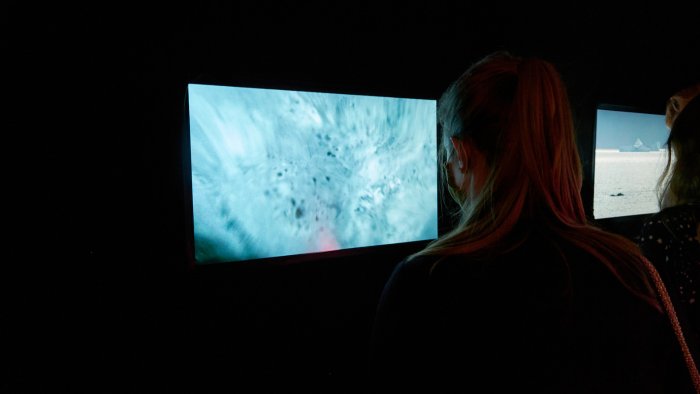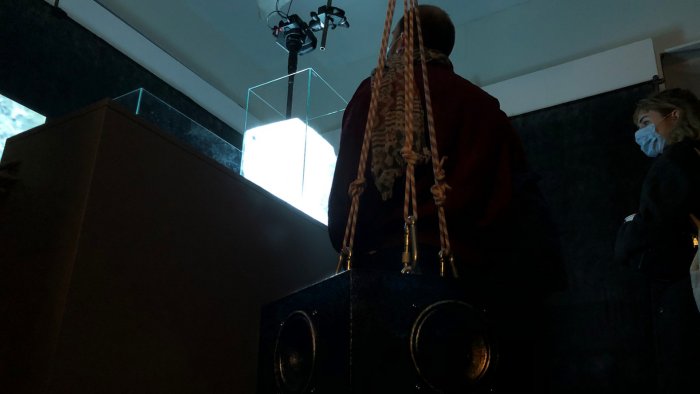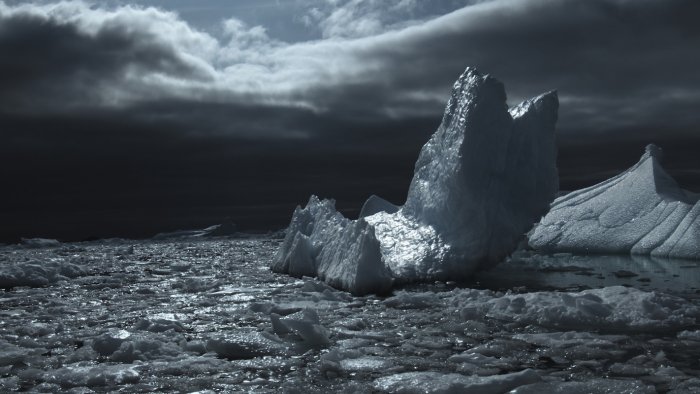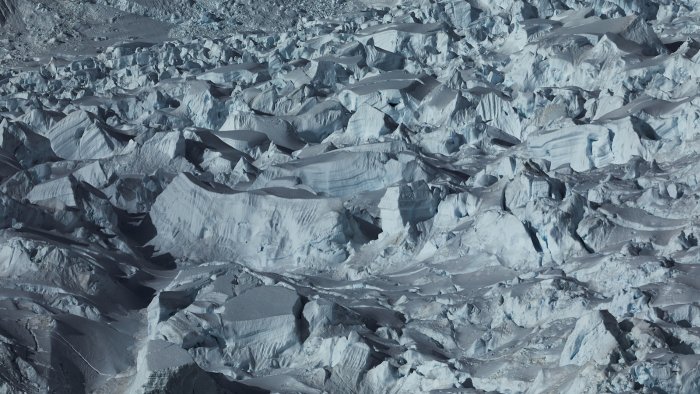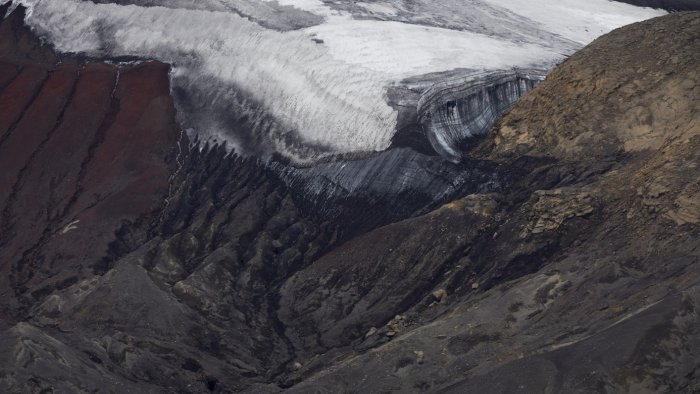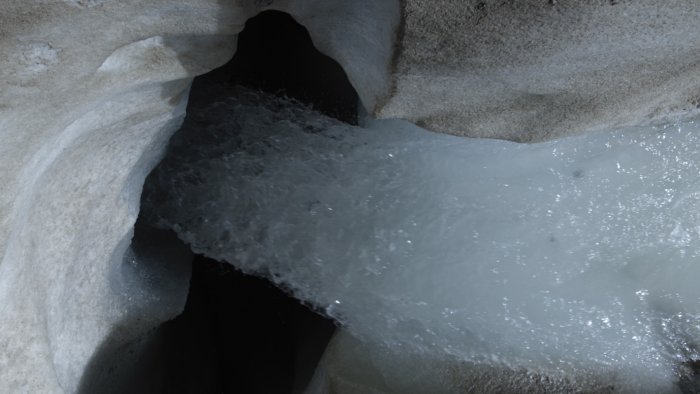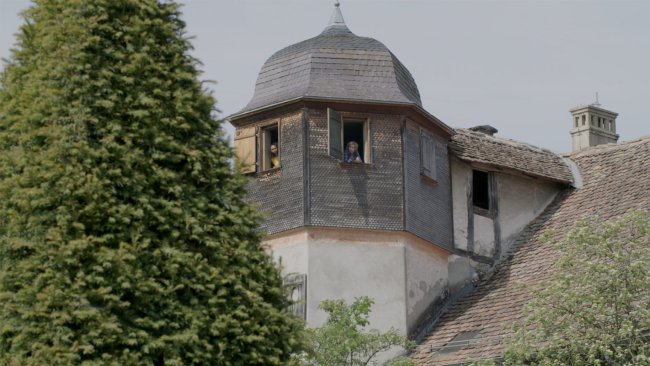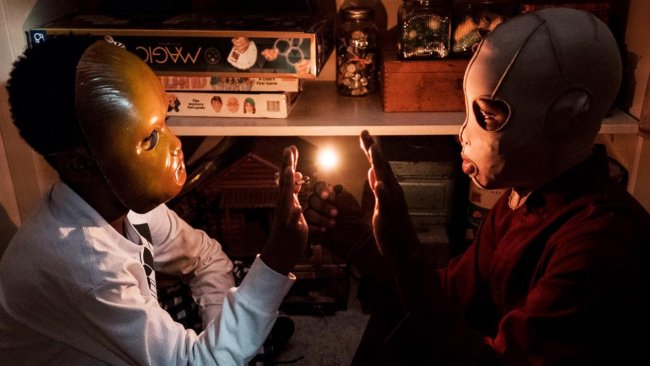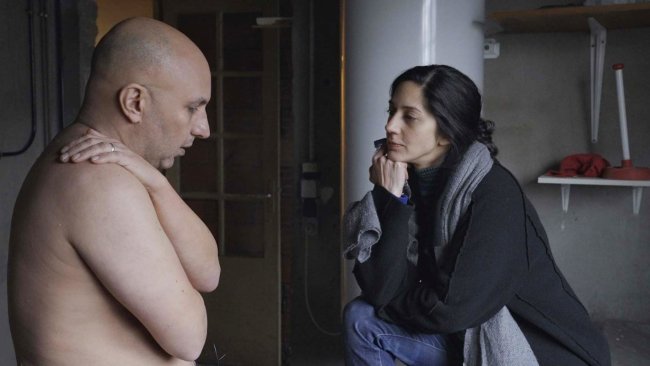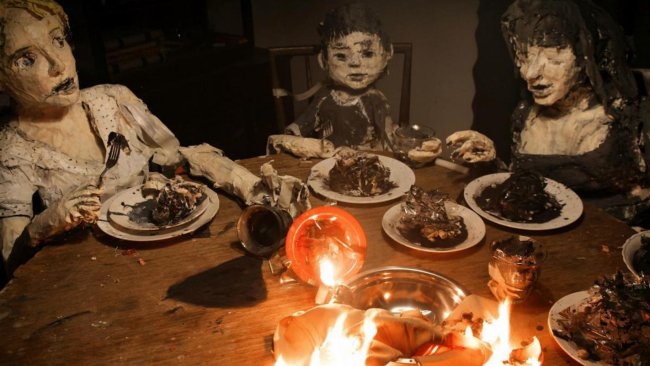*Gel- [Ein Gletscherarchiv]
[…] Now, I find this tension between the aesthetic and the non-aesthetic quite inspiring, and fully legitimate insofar as it yet concerns the majesty and beauty of glaciers but in their moment of downfall.
[…] Actually, more than Sisyphean, Huber’s work displays a precise paradox, which corresponds to the melting glaciers’ act of revealing and disappearing at the same time.
[…] Again, beauty and disturbance, as the elements of our experience that reflect the paradox of art as both rendering and destroying.
Text: Giuseppe Di Salvatore
Kein Museum is no museum, but a space for experiments. A little space, almost a cove of the street, Mutschellenstrasse 2, Zurich. These spatial coordinates are not meaningless for Janis Lionel Huber’s geological work of art, which is both global and local. Global: it concerns the transformation of glaciers today; local: it is a site-specifical installation.
Local
The Corona rules oblige the little space to leave the door open, thereby welcoming the noises of the street, mainly coming from cars. The exhibition cannot currently take advantage of the atmosphere of recollection of little spaces so there is no room for contemplation, and this seems to be in contrast with the spectacular images on the three screens – the more abstract ones exploring the ice from within, the others explicitly panoramic, almost National Geographic-like, and the last ones playing subtly with a forward-backward movement that hints at the hope of reversibility. A totemic block of ice at the centre of the space slowly melts and refracts the coloured lights coming from a cinema projector: another fascinating image that seems to ask for reflection and contemplation. The three sound tracks by Gerome Johannes Gadient contribute to (the need for) an immersive and explorative atmosphere, which nonetheless has to deal with noises coming from the street.
Now, I find this tension between the aesthetic and the non-aesthetic quite inspiring, and fully legitimate insofar as it yet concerns the majesty and beauty of glaciers but in their moment of downfall. To sheer admiration, the exhibition instead counter-proposes a stumbling experience to us, the experience of stumbling itself, the experience of the accident. From this point of view, the awkward glass box that contains the ice block, and the torn plastic towels normally used to protect glaciers, here hanging from the ceiling, gain an unexpected rightness. The space of Kein Museum actually must remain open, because the art that is exhibited in it wants to express the disturbance on which it reflects.
Global
*Gel- [Ein Gletscherarchiv] is a matter of geography, where the writing (graphein) of the earth (ghe) is definitely a moving activity (writing/rewriting), following the incidental but relentless movement of the glaciers, and does not just concern an unchanging map. Recording this movement, with video images, sounds and an installation concept (scenography by Jeanne-Vera Bourguignon and Rebecca Zesiger), is exactly Huber’s task, a necessarily elusive task, for elusive, or literally slippery, is the object to be recorded. If one thinks of glaciers like gigantic archives recording the history of Earth, Huber’s task of recording the melting glaciers reveals itself to be the recording of the disappearing of a recording power – a Sisyphus’ task – for melting glaciers reveal precious information from the past that they have conserved, but in doing exactly this they lose their power of conservation.
Actually, more than Sisyphean, Huber’s work displays a precise paradox, which corresponds to the melting glaciers’ act of revealing and disappearing at the same time. Yes, for exhibiting the melting of the glaciers needs a great amount of energy (expensive expeditions, use of sophisticated devices), which finally contribute to their melting itself. Of course, this expenditure of energy is quite little in comparison with the effective causes of global warming, yet heavily meaningful in an artistic discourse, which inevitably deals (also) with a symbolic layer. Now, Huber is perfectly aware of this, so aware that he makes it one of the central aspects of his work. Literally “central”, for at the centre of the little space of the Kein Museum we will discover – almost like the climax of an evident exhibition path, after window, sound, ice block and screens – the cinema projector and the jungle of cables and technology hidden-but-lighted under the slowly melting ice block. Our filmic journeys on the Morteratsch glacier in Switzerland or the Perito-Moreno glacier in Argentina (one of the few glaciers that is actually – and paradoxically… – growing) cannot be detached from the hic et nunc of energy-consuming technology. In this way, global warming is not just a sad story that happens over there, but a palpable reality here and now. Again, beauty and disturbance, as the elements of our experience that reflect the paradox of art as both rendering and destroying.
More than global, less than local
Our local experience and our global reflection, both of beauty and disturbance, are not the only dimensions of *Gel- [Ein Gletscherarchiv]. These are our dimensions, dimensions that concern us and our relationship with the glaciers, not the glaciers in themselves. What Janis Lionel Huber achieves through the dialectic of beauty and disturbance is also the restitution of a certain presence, a certain protagonism to glaciers – which is often erroneously expressed in terms of “agency”, as if they had a sort of capacity to act freely. It is a delicate question, one that is better approached speaking in terms of perspective. In his work, which – it is important to remark – expands through a generous catalogue and consequently includes the realm of words, Huber tries to focus on the perspective of glaciers as objects that had and will have a life beyond the human limits of history and manipulability. To use Timothy Morton’s notion (mentioned by Huber himself), glaciers would be «hyper-objects», objects that as such defy the saturating and globalist pretensions of the idea of Anthropocene. Therefore, they are more than global, with regard to our reflection, and less than local, with regard to our experience. At the Kein Museum at the Zurich Mutschellenstrasse, would we be sensible (or sensitive) enough to hear this metaphysical, unmeasurable presence? In any way, this is the ultimate challenge of Huber’s *Gel- [Ein Gletscherarchiv] – and the real challenge of art itself.
Watch
See the video excerpts of Janis Lionel Huber’s work
See the book publication of the project
Info
*Gel- [Ein Gletscherarchiv] | Exhibition | Janis Lionel Huber | Kein Museum Zürich – KM37 | 1-10/10/2020
First published: October 14, 2020
